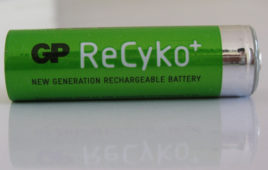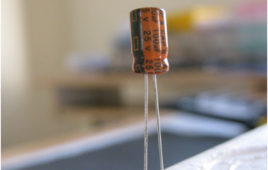Among all the secondary and rechargeable batteries that are available till date, NiMH batteries have been a popular name. The concept of commercialized hydrogen based rechargeable batteries was sought in 1960s but inability to store hydrogen in small cells was a big hindrance. In the mid 90s, technological achievement was unlocked and commercial production of NiMH batteries became possible.A single AA standard NiMH cell gives 1.2V of outputs and can serve for an average of 2-3 years. The efficiency of these cells is around 70-80% and remains constant for a long period of time. This is a prominent reason for mass popularity of these cells.
Insight – How Pencil Cell, Primary, Carbon-Zinc Battery works
Carbon Zinc battery also known as primary cell or dry cell or pencil cell is among the cheapest reliable power sources powering a large variety of electronic equipments since the last century. It is used to provide a constant voltage source through a chemical reaction. This battery cannot be recharged and has to be disposed after usage. A commonly used primary battery is shown in the image above. These types of batteries are available in various sizes and are used to power devices like Torches, Toys, Remote Control, Clocks etc. The battery has two terminals the top view is the positive terminal and the bottom view is the negative terminal.
Insight – How Capacitor works
Capacitor is a widely used electronic component. It stores electric charge and then discharges it into the circuit. It blocks the direct current and allows the alternating current to pass through it. Depending on the purpose, there are a variety of capacitors being used like ceramic, electrolytic, mylar, mica, etc. We will explore an electrolytic capacitor through this article.A capacitor contains two conductor plates which are generally made of metal and an insulator between them. This insulator also known as dielectric is made up of material like paper, plastic, ceramic or glass. The two plates are electrically connected to the external circuit with the help of two thin metal rods also known as the legs of the capacitor.



